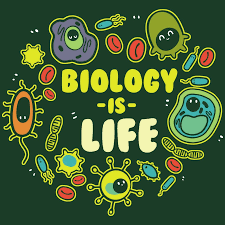124
SENIOR FIVE BIOLOGY (S.5) This Course is of Senior Five Biology (S.5) which is taken by students who take the …
Course Currilcum
- BIO5: CELL BIOLOGY Details 1 year
- Early biologists saw cells as simple membranous sacs containing fluid and a few floating particles. Today's biologists know that cells are infinitely more complex than this.
- BIO5: CELL BIOLOGY (OGANELLES) Details 1 year
- CELL BIOLOGY (OGANELLES) are a subcellular structure that has one or more specific jobs to perform in the cell, much like an organ does in the body.
- BIO5:CELL STRUCTURE AND MICROSCOPY Details 1 year
- A cell can be defined as a unit of biological activity which at its basic consists of protoplasm (the nucleus and cytoplasm and all their inclusions) bounded by a plasma membrane (also known as the cell membrane or plasmalemma) in animal cells and in addition a cell wall in plant cells.
- BIO5: THE CELL CYCLE Details 1 year
- THE CELL CYCLE consists the complex sequence of events by which cells grow and divide into daughter cells.
- BIO5: PROTEIN SYNTHESIS Details 1 year
- Protein synthesis requires the supply of amino acids, energy and information. When these are grouped or brought together, proteins are synthesized in 3 types, i.e. Transcription, Activation and Translation
- BIO5: CHEMICALS OF LIFE Details 1 year
- Chemicals of life are compounds needed to maintain life of living organisms. They are divided into two groups.
- BIO5: CHEMICALS OF LIFE (FATTY ACIDS AND PROTEINS) Details 1 year
- All occurring lipids have glycerol and therefore it is the nature of the fatty acids which determines the characteristics of any particular lipid.
- BIO5: ENZYMES Details 1 year
- Enzymes are biochemical catalysts made up of globular proteins. An enzyme is always associated with a non-protein component known as co-factor which is tightly bonded to the enzyme.
- BIO5: NUCLEIC ACIDS Details 1 year
- These are made up of chains of individual units called nucleotides. Nucleic acids carry the genetic code that determines the order of amino acids in proteins.
- BIO5: THE GENETIC MATERIAL Details 1 year
- This is the material that is responsible for the transmission of hereditary traits or characteristics form one generation to another.
- BIO5: CELL PHYSIOLOGY (MOVEMENT IN AND OUT OF CELLS) Details 1 year
- CELL PHYSIOLOGY, Materials move in and out of cells by the following processes: Osmosis, diffusion, active transport, phagocytosis and pinocytosis.
- BIO5: CLASSIFICATION OF ORGANISMS Details 1 year
- Classification of Organisms is defined as the grouping of organisms together basing on the features they have in common.
- BIO5: KINGDOM PROTOCTISTA Details 1 year
- KINGDOM PROTOCTISTA was formerly known as Protista. It includes all single celled eukaryotic organisms such as algae and protozoa. Algae are autotrophic while protozoa are heterotrophic.
- BIO5: KINGDOM FUNGI Details 1 year
- KINGDOM FUNGI of unicellular and multicellular eukaryotic heterotrophic organisms that have chitin in their cell walls. Lichens, which are associations between fungi and algae are classified. according to the fungus present and are hence placed in this kingdom.


